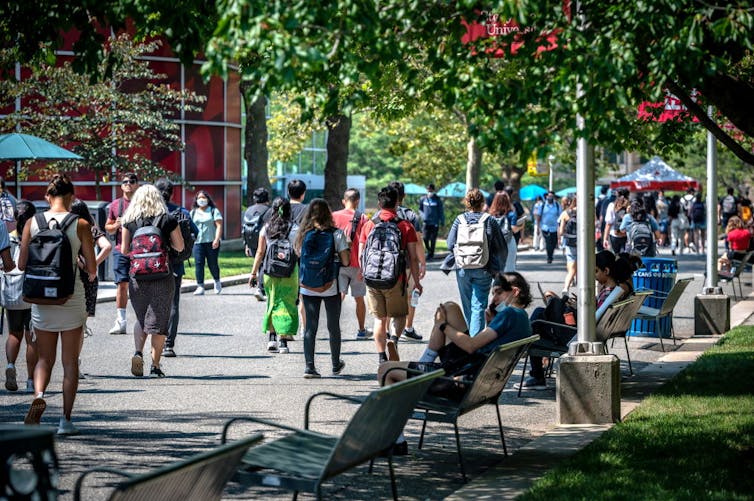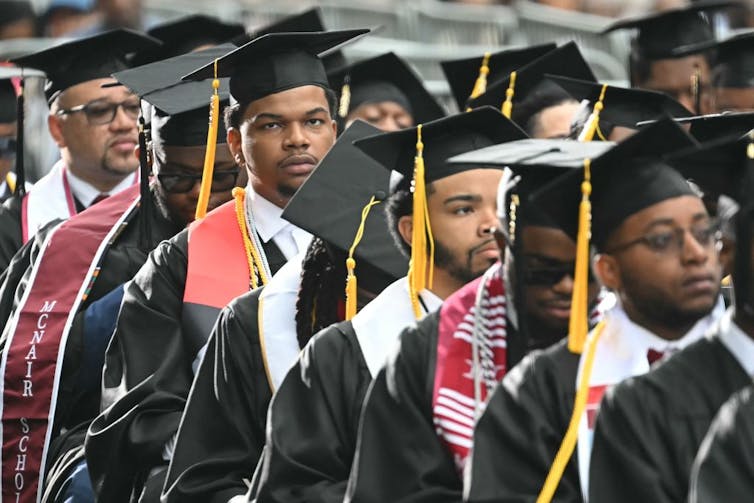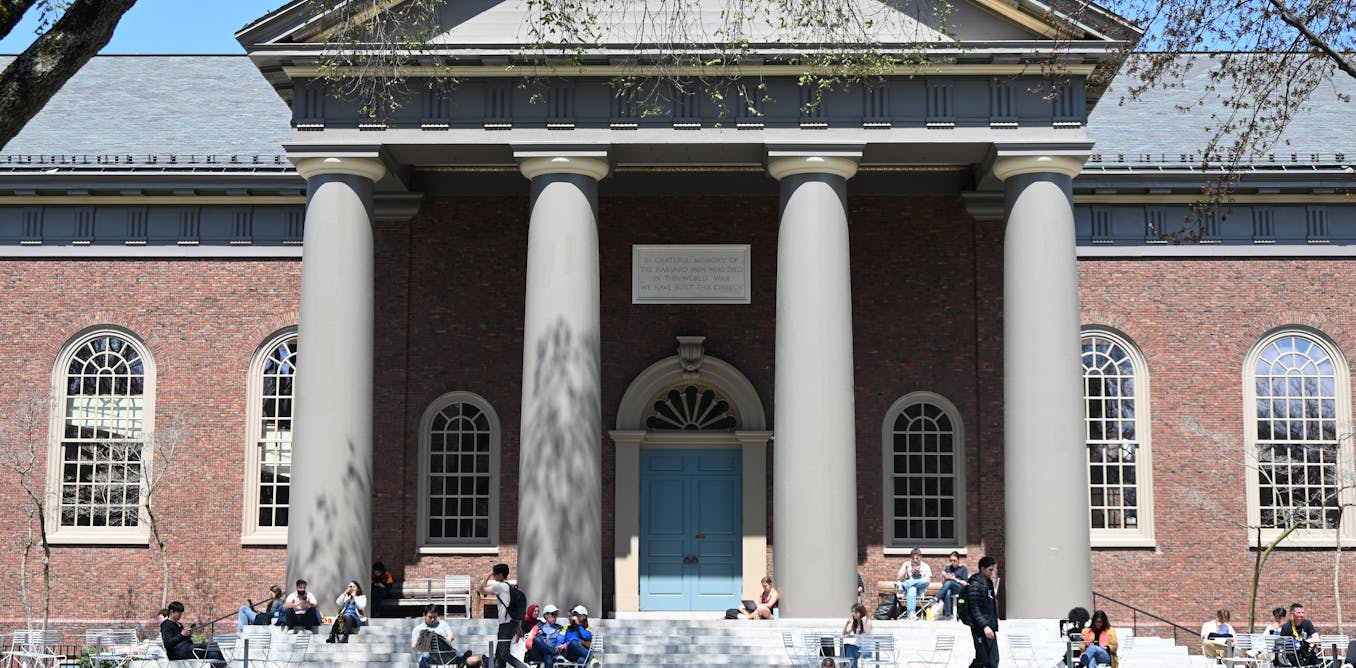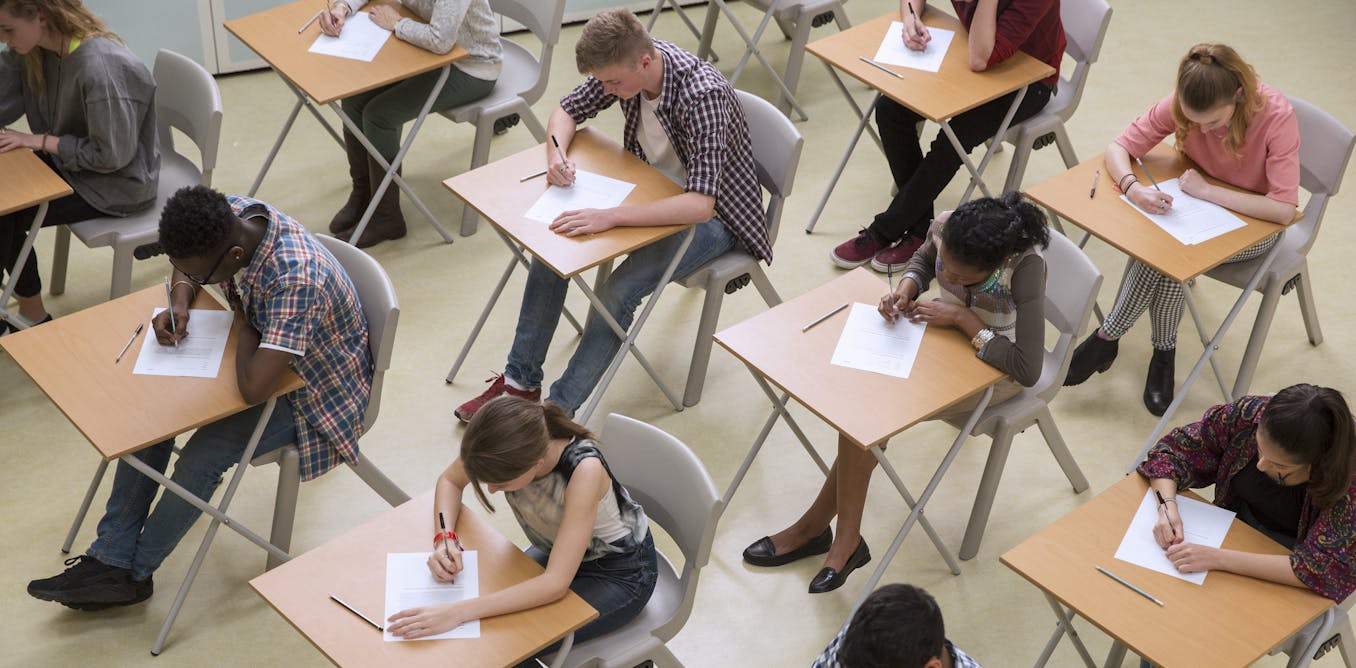Headlines often mention the ongoing power struggle between President Donald Trump’s administration and private colleges such as Columbia University and Harvard University.
But such elite universities educate only a small portion of America’s total undergraduate population, which stood at 20 million in fall 2024.
As an associate professor of higher education, I have published research on policies that affect college access, retention and graduation. My work has examined data across different types of higher education institutions.
The Ivies and other elites
Less than 1% of American college students attend elite private colleges.
A small group of colleges, consisting of Ivy League schools and other highly selective universities known as “Ivy-Plus,” fit in this category.
The Ivy League consists of eight private schools that formed an athletic conference in the 1950s. The member universities are known for their academic excellence.
The Ivy-Plus are highly prestigious colleges located across the country with similar reputations for outstanding academics such as Stanford University, Duke University and the Massachusetts Institute of Technology.
These colleges have extremely competitive admissions, often accepting less than 10% of applicants.
They enroll students from high-income backgrounds more than any other type of institution. Students from upper-income families represent 60% to 70% of attendees at elite privates.
Elite private universities confer undergraduate and graduate degrees and focus on research.
Elite public colleges
SOPA Images via Getty Images
Elite public colleges, such as the University of California, Berkeley, and the University of Virginia, are near the top of the U.S. News & World Report’s rankings. They also are often the flagship university in their state, such as the University of Michigan.
These colleges have highly selective admissions processes as well and often accept about 10% to 20% of applicants.
The largest portion of revenue at public universities, roughly 40%, comes from government sources that include federal, state and local government grants, contracts and appropriations, according to the National Center for Education Statistics.
Students from upper-income families constitute 50% to 55% of attendees at elite public colleges.
Like elite private colleges, elite public colleges confer undergraduate and graduate degrees and focus on research.
Community colleges
There are 1,024 community colleges in the U.S., serving 39% of undergraduate students.
These public, two-year colleges grant associate degrees and occasionally bachelor’s degrees. They also offer certificates, workforce training and noncredit courses to prepare students for college-level courses.
Community colleges have a strong teaching focus and a mission to serve their communities. They tend to guarantee admission to anyone who wants to enroll and offer lower tuition and fees.
Community colleges are also critical entry points for students from lower-income households and those who identify as racial or ethnic minorities or who are the first in their family to attend college.
Like other public institutions, community colleges depend heavily on state funding, as well as local property taxes.
Regional universities

Newsday RM via Getty Images
Of all undergraduates who attend public, four-year institutions, roughly 70% enroll in regional institutions.
They include colleges in state-run systems such as the State University of New York and California State University.
There is wide variation in acceptance rates among regional public universities, but they tend to be moderately selective, accepting between half and 70% of applicants.
Regional public universities offer a wide range of academic programs mostly at the bachelor’s and master’s levels. They also depend heavily on state funding.
Small private colleges
Small, less selective private colleges often have acceptance rates of 60% or higher and enroll 3,000 or fewer students.
Their budgets depend primarily on tuition and fees.
Some of these types of colleges have suffered from enrollment declines since the early 2000s, exacerbated by the COVID-19 pandemic.
Many of these institutions lacked the large endowments that allowed elite privates to weather the financial challenges brought on by the pandemic.
A number of small private colleges, such as Eastern Nazarene College in Massachusetts, have closed or merged with other universities due to financial difficulties.
These small private colleges often offer academic programs at the bachelor’s and master’s levels.
Private for-profit
About 5% of students attend private for-profit colleges.
These colleges offer courses in convenient formats that may be attractive to older adult students, including those with full-time jobs.
For-profit college students disproportionately identify as older, Black and female. Students who attend these colleges are also more likely to be single parents.
In recent years, the federal government has cracked down on false promises some for-profit institutions made about their graduates’ job and earnings prospects and other outcomes.
The enforcement led to the closure of some colleges, such as ITT Technical Institute and Corinthian Colleges.
Minority-serving institutions

Andrew Caballero-Reynolds/AFP via Getty Images
Minority-serving institutions have a mission to serve certain student populations.
Minority-serving institutions include historically Black colleges and universities, or HBCUs, such as Morehouse College; Hispanic-serving institutions, or HSIs, such as Florida International University; Asian American, Native American and Pacific Islander-serving institutions, or AANAPISIs, such as North Seattle College; and tribal colleges and universities, or TCUs, such as Blackfeet Community College, which serve Native American students.
The federal government determines which colleges fit the criteria.
These are primarily two- and four-year colleges, but some grant graduate degrees.




